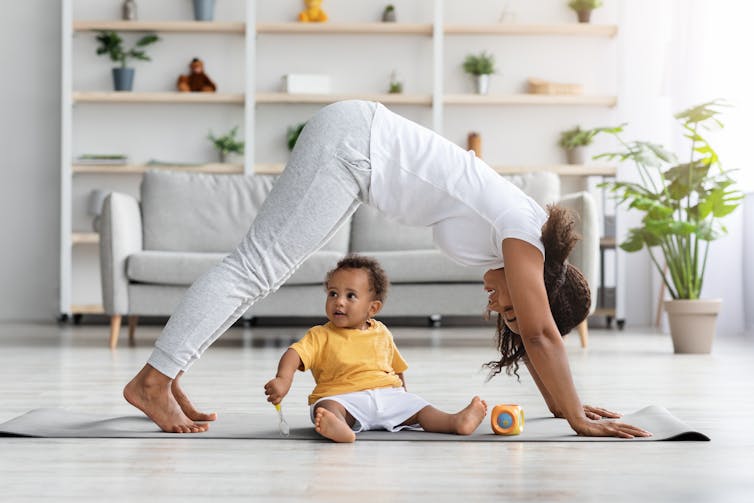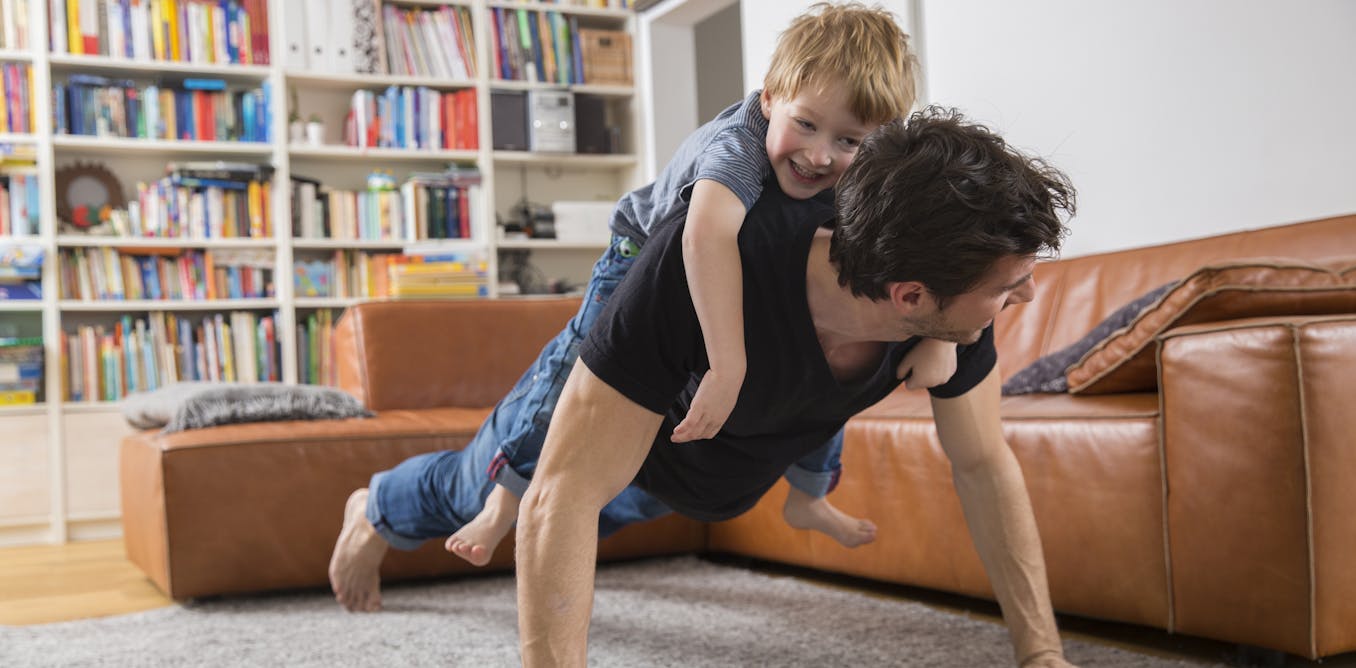Parents have received reassurance that their overwhelming stress surrounding childrearing is not going unnoticed: In the United States, the surgeon general recently announced an advisory on the mental health and well-being of parents.
While it is not surprising that raising children with the added challenges of social media is contributing to parents’ stress, it is particularly evident in mothers of young children.
In my work as an exercise physiologist and health researcher, my objective is to teach mothers to move their bodies and to appreciate the importance of engaging in physical activity while also maintaining self-compassion. I recognize that while physical activity may benefit mental well-being, it is also an added stipulation in an overburdened schedule.
With mothers navigating never-ending to-do lists, expecting a traditional approach to exercise (travel to an exercise facility, engage in 30 to 60 minutes of exercise, travel home) is not going to make the cut. Yet, this is what parents’ social media is flooded with, as some mothers promote their fitness routines and return to their pre-baby bodies.
Why workouts often don’t work
(Shutterstock)
Those who work in behavioural medicine have noted traditional exercise prescriptions — structured exercise, at a specific intensity for a prolonged duration — may be a deterrent in some circumstances. These simply don’t work for those who struggle to find time in their schedule for self-care. This may be the truest for mothers, who are often front-loading domestic duties, immersed in intensive parenting, carrying the mental load of motherhood (bearing and parenting a young child) and working outside of the home.
With time spent with children skyrocketing in recent decades, and most mothers not having the support that makes childrearing more manageable, it is no wonder that mental well-being — and moreso, physical activity — is suffering.
A 2020 study found that 39 per cent of working mothers in the United States did not engage in a single bout of vigorous activity during the week. Yet, those who were able to engage in regular physical activity had a higher quality of life.
Feasible fitness

(Shutterstock)
So, what is the solution? How can we promote physical activity to support mental well-being among mothers without adding to their overwhelming to-do list? From my own research with new mothers, it is evident that those who attempt to stick to more structured exercise often find it falls by the wayside, as even the best laid plan can be deterred by child sickness, work deadlines and softball tryouts.
In a recently submitted research study, my colleagues an I focused on having mothers engage in physical activity around their own feelings of readiness. This ensures that exercise doesn’t become another overload that their body isn’t recovered enough to handle. For instance, one participant described:
“I’m obviously not feeling so great so I’m not going to try to push myself to do anything too intense … kind of give you permission to kind of just more focus on yourself and just recover, so that was nice.”
In contrast, in a previous study we offered physical activity programming in a structured online format to new mothers. Participants couldn’t adhere to the program the way that was expected and it made them feel that they were failing.
“At the end of the day I was like yeah, no I’m not doing this video, I am going to bed. So that would make me feel […] I was not enough, […] I should have done that, I should have pushed myself more. So, it was a love-hate relationship with it.”
Flexible approaches

(Shutterstock)
It appears that flexible approaches may be best when it comes to mothers adhering to physical activity, given the challenges in finding time to succeed at more stringent programming.
‘Exercise snacks’ have taken off as an opportunity to move in small bites throughout the day to achieve health benefits. In addition, “no pain, no gain” is out of fashion and there is an increased focus on promoting enjoyable exercise. For instance, getting to choose how hard one pushes their body during exercise — rather than prescribing a specific intensity — increases overall engagement in physical activity. Green exercise, or engaging in physical activity in a natural environment, has also been shown to be more pleasurable and should be considered as a way to increase adherence.
Read more:
Snack your way to better health with bite-sized exercise breaks
As a full-time working mom of two young children — and lacking a local support system — physical activity has changed dramatically for me in the last few years. I’ve squeezed in yoga at the office before school pick-up, have run or walked around baseball fields during spring sport chaos and lifted weights in the backyard while my kids ran in circles around me. It’s not perfect, but it’s getting the job done and I feel better for it.
While all mothers have divergent challenges and these may not be solutions for everyone, mothers missing out on physical activity during these stressful years does not promote their health and well-being. So maybe the solution is to be flexible and self-compassionate around physical activity engagement while recognizing the many demands being placed on mothers.

The post “How moms can blend movement and motherhood for mental well-being” by Iris Lesser, Assistant Professor in Kinesiology, University of The Fraser Valley was published on 09/04/2024 by theconversation.com




































Leave a Reply